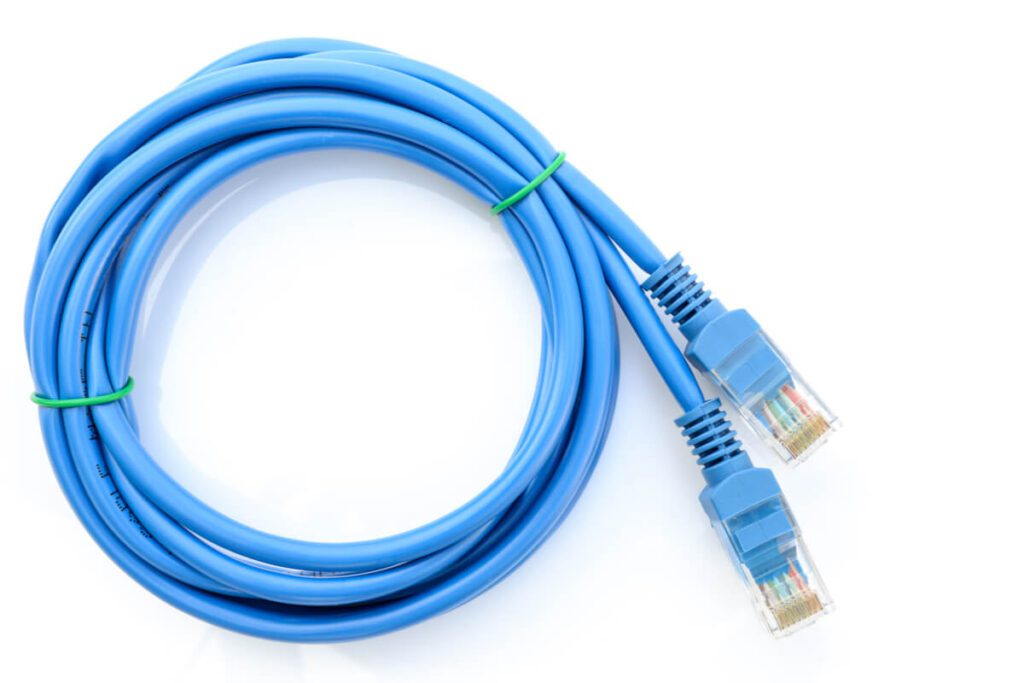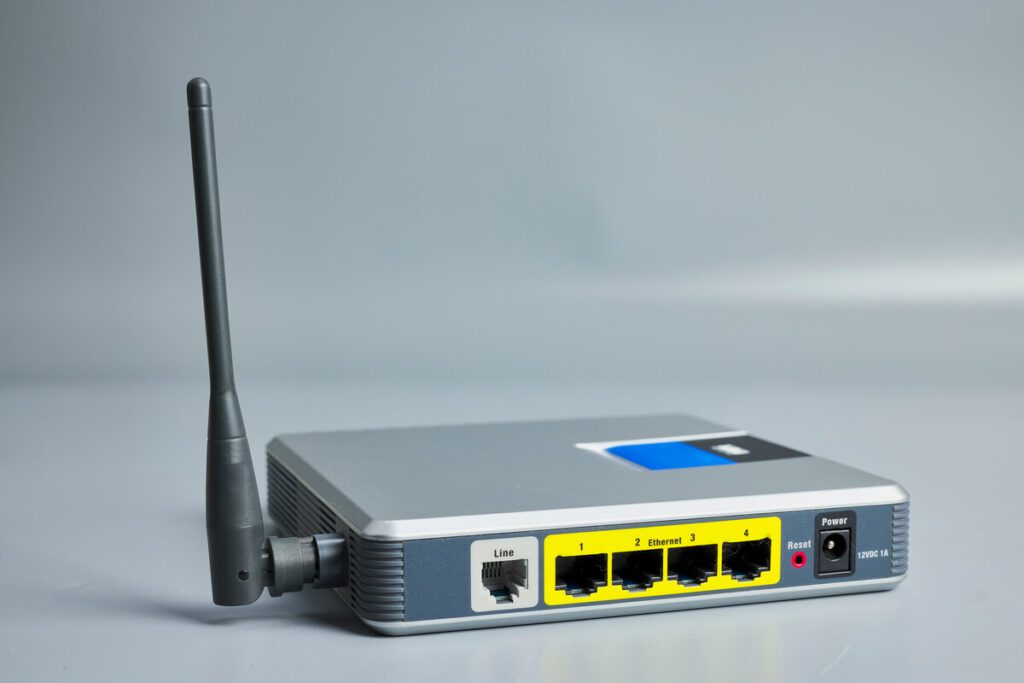
If a video gamer ever tried playing a game online using their home Wi-Fi alone, they probably wouldn’t game. That is a job for the mighty ethernet cable, which directly connects you to your home router without any signal obstructions. Just a nice strong wire and some plastic clips.
So how do you set one up?
Jumping straight into it, the first step is to acquire the LAN cable (hold on to your hats) that looks like this:

Step two, bring that cable up to your modem box, and plug in the wire to any of the similarly colored ports.
Keep in mind modems and routers are different things but can often be built into one device or ‘box’.

Your modem connects your home to the wider internet. In the back of the modem, you will find a row or two of jagged square-shaped ethernet ports. If not, then get yourself an ethernet cable splitter, or an ethernet connector and plug it into the modem box.
Usually, one of those ports in the main port with “WAN” or “Internet” written above it. The wire connected there is what is connecting your modem to your phone cable or coaxial cable which goes into the wall.
From there it goes to what is called the “demark,” which is the point where your ISP takes hold. Don’t pull out that cable.
After you acquire your new ethernet cable and plug it into any of the ports, all you need to do is plug the other end of the wire into the device in question and voila, sweet, sweet megabytes.
Some devices of course are too far away from the main router of course, in which case, look for the nearest ethernet cable jack in the walls of the room that your device is in.
Most modern homes when built consider cable extensions to separate rooms. If not, you could pay someone to install one for you, or install the cable jack yourself. We support you either way.
Finally make sure your Ethernet light is glowing green on the modem. If all else fails, turn everything off and on until it works, or check your configuration from inside your computer.
Different machines and operating systems may have different places to adjust settings according to your chosen tutorial.